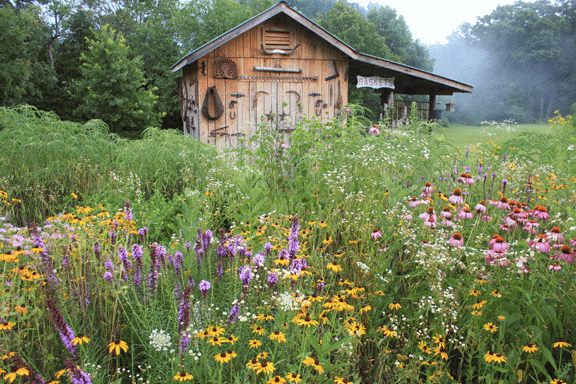
Native Wildflower Planting
If you’re thinking of adding a field of native wildflowers to your property there are a few steps to take that will help your efforts to succeed! Since Autumn is a great time to plant for spring flowers, it’s the perfect time to begin planning.
- Prepare your site. You wouldn’t simply scatter lettuce seeds in a field of weeds and expect a good harvest, would you? Any kind of planting will require some preparation, including wildflowers. If the area you’ve chosen to plant is mostly level, a rototiller will do a great job. If you till again after two weeks you’ll kill any weeds that may have sprouted, giving your seeds a better chance of thriving. If you’re swapping out lawn for wildflowers, a sod cutter will make swift work of getting you to ground level.
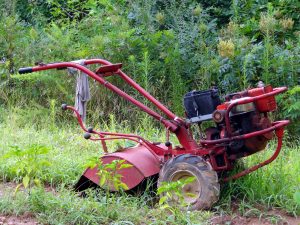
- Determine your Soil type. The three basic types of soil are sand, silt, and clay. Sand drains very fast and dries out quickly. If your soil is mostly sand, you’ll want to select a wildflower mix labeled “dry”. Silt (also called loam) has plenty of organic matter to hold moisture without being too soggy. Mixes labeled “medium” or “mesic” will do well in this soil. Clay is very dense and drains slowly. Since it holds water that can quickly rot some species, you’ll want to select a mix labeled “wet” for wildflowers that will thrive.
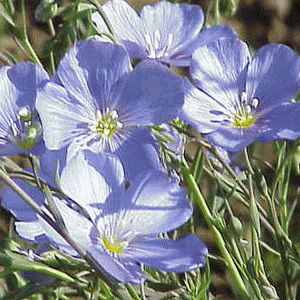
Lewis Flax grows well in Medium soil
- How much Light will there be? Is the area shaded by nearby trees, or is it in the open sun? If the spot gets less than 2 hours of full sun in a day, you’ll need a mix designed for “woodland” areas. Partial sun means there’s shade for just part of the day. This is considered a “savanna” setting. Full sun is also called a “prairie” setting, and you’ll find the most variety of species available for this one.
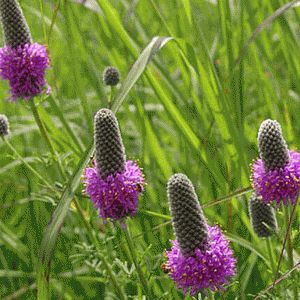
Purple Prairie Clover grows in zones 3-9
- Decide when to plant. Some people like to rototill their field in late May or early June to kill the first batch of weeds before planting. However, this means the seeds won’t have a cold wet period to help them germinate, and you’ll need to use stratification first. (See this post explaining how to stratify your seeds.) Fall is the best time to plant wildflowers since it mimics the conditions they need in the wild. The cold winter months will stratify the seeds for you, improving germination. You can plant right after the first hard frost, up until there’s snow cover. The seeds can be scattered right over the frozen ground, and the frost action will help them work into the soil over winter.
- Select your seeds. It will be helpful to know exactly which wildflowers will thrive in your area. Since you already determined your soil and light conditions, one easy way to narrow down your options is to visit Everwilde.com and hover over the Wildflower Seeds tab. Select your growing region from the window that opens. Then you’ll be able to scroll down and select your soil type, USDA zone, and how much light you have. You can even choose blooming time, flower color, plant height and other factors to narrow your options further. To choose mixes that are a blend of varieties that will thrive in your region, type “wildflower mixes” into the search bar.
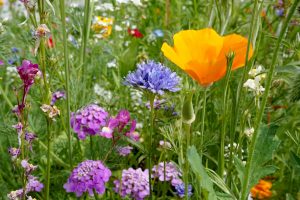
Colorful Wildflower Mix
- Start Planting! Smooth the area by raking or dragging. Add some filler to your seeds to help them spread evenly. Damp sand, vermiculite, and sawdust are good choices. If your seed mix covers 1,000 square feet, use about 5 gallons of filler. Spread the mixture by the handful, trying to scatter as evenly as possible. Try using half the mixture first, walking back and forth in one direction. Then go over it again perpendicular to the first pass. Rake again to cover the seeds (if the ground isn’t frozen). To ensure good contact with the soil, you can use a yard roller to press the seeds in place. Or just walk all over the area. To prevent erosion and hold in moisture, a light layer of mulch is helpful. This can be as simple as weed-free grass clippings.
Following these steps will increase your chances of a successful wildflower planting and hundreds of blooms for years to come! Remember that perennials planted from seed will usually bloom the second year, so some patience is required. Purchasing a few plants from your local nursery that will bloom the first year can help add color while you wait for the seed planting to burst into bloom.
For even more helpful information, take a look at our FAQ page HERE.
Copyright 2018 Everwilde Farms

